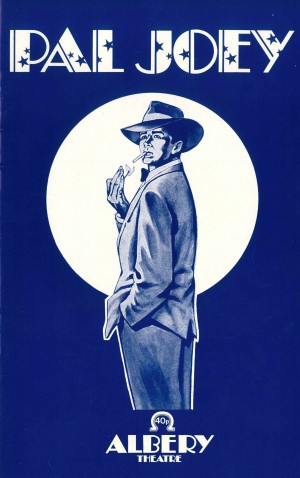We spent three days talking about the language of the NATO communique. I couldn’t think of something less consequential to the result of the counteroffensive — and the most important goal: winning the war. Josh Rogin, Washington Post
The charade in Lithuania has come to an end. NATO met and decided to let the Ukrainians continue to take the brunt of Putin’s madness.
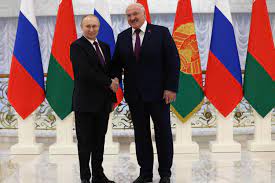
The American playbook is that of before. Let the Russians exhaust themselves against an American surrogate foe that, once balanced and fed sufficient arms, will never surrender their homeland. An independent Ukrainian homeland was once a fiction, just as under the reign of Alexander Lukashenko, Belarus is once again a satrap of Russia. But not Ukraine.
The inconvenient fact that the Ukrainians must face is that Crimea was handed over to the Ukrainian SSR in a fit of pique by Khrushchev. Then it did not matter. Russia had absorbed the Ukraine in the early nineteenth century, and Crimea was very Russian, especially given what Stalin had done to the Crimean Tatars and other minorities.
The three Baltic states, even though they have been squeezed into NATO, continue to be nervous. In the case of the Estonian Boot, a road connecting two parts of Estonia goes through Russia, and there have been strict rules for Estonian usage, which could be revoked.
South is Latvia, where a significant part of the population is Russian speaking; when I visited four years ago, our driver was particularly stressed when I asked him to stop so we could photograph the Russian embassy.
The third Baltic country is Lithuania. As we were sitting out in the sun in Vilnius having coffee, the Lithuanian High Command cars parked in front of us and drifted into our hotel for a meeting. At that time coincidentally, Belarus had loosened requirements for flights into Minsk. The land border between Lithuania and Belarus was still a pain in the backside, restricting the crossings in true Russian bureaucratic tradition, but accessible. No longer.
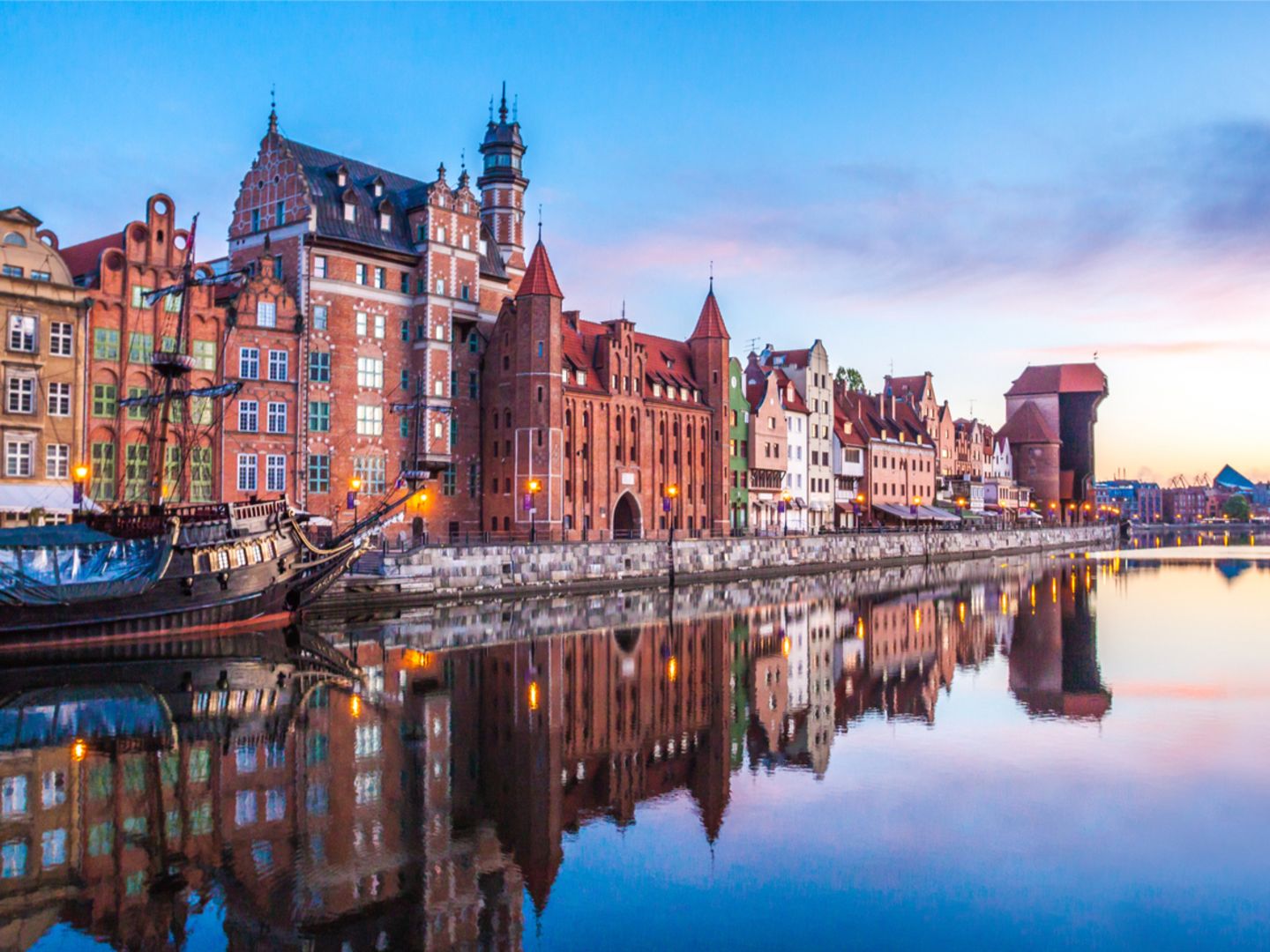

One of the problems with this part of the world is the constant presence of socio-geographical anomalies. After the Treaty of Versailles, it was the Polish Corridor, and the free port of Danzig. Then there was the sliver of land called Memel, between Lithuania and East Prussia. All of these added to the combustible nature of the region between the two World Wars.
Kaliningrad, once the Eastern Prussian city of Königsberg, remains. It is an exclave of Russia, where it stores its Baltic fleet during winter and which bristles with all the hacking devices that Putin can stuff into this former part of East Prussia. NATO could occupy it tomorrow, but the nuclear threats from Putin inspire fear among all the NATO crowd not to do so.
It is fascinating to watch this assortment of European governments, always under the American flag, (or in the case of Korea the UN) willing to pick a fight with the brown and yellow – first Korea, then Vietnam and finally Iraq and Afghanistan. Australian governments like the faithful drover’s dog keeps running alongside the Americans wanting to be rewarded for our faithfulness. It’s a form of “look at me”, and then we participate in Wars that the Americans do not win.
With one exception, in which Australia did not participate, and that was the “shadow” war that drove the Russians from Afghanistan – at a cost. America provided sufficient weaponry and logistic advice for it to be used against them when the Taliban shifted from being ally to enemy.
Now it is clear that Zelensky was not expected to be the strong man that he has become, given his various predecessors’ weakness in being susceptible to Russian interference. The pathetic responses of some of the NATO members saying that the Ukranians should be more grateful. For what? Hissy fits do not help – just shows a whiny weakness.
I believe NATO should be thankful for Zelensky because it is the ultimate ceasefire, if not peace, which will need a strong and canny leader. Ukraine will be in ruins and much of its youth dead or maimed. Whether the outcome will advantage Ukraine and move the Russians back beyond the borders will be difficult, given the rules of the game, devised probably by “those smart ugly Americans”, whose simulacra lost the Vietnam War.
Zelensky will keep requesting the weapons to defeat the Russians or to forge a stalemate. There is no doubt as to that because he has not been given the aircraft he needs to challenge the air superiority afforded to the Russians. Drones are cheap, and increasingly sophisticated in avoiding detection and killing people. What must be most galling for Zelensky is the attempts to make him a puppet, to do what the ossified brains want, these bureaucracies like NATO, where the original intent had been lost in a whirl of paper and high living by “the braided bunch”.
War was the last thing NATO want or expected, because the threat of a nuclear holocaust was sufficient deterrent for the Cold War to be anything but a giant charade. So they thought. Unfortunately, Putin came along, with all the mythology which seems to be entwined in Russian Orthodoxy with delusions of Peter the Great. This is Putin the Great – and greatness comes out of conquest.
The commentator in The Washington Post makes prophetic sense in attempting to define the end game
That line is going to have to be on Ukraine’s 1991 internationally recognized borders. I don’t think anything short of that is going to be sustainable in the long term. Although I would put an asterisk on Crimea. I think that there is a potential for a deal on Crimea if the Ukrainians can take back Donbas and the rest of the Russian-occupied territory. They could say, “We’re not going to recognize Russian sovereignty over Crimea, but we’re going to live with it for now.”
A solution canvassed is the so-called armistice arrangement as pertains to North and South Korea with the line drawn at the 38th parallel. Given that it is almost seventy years since these arrangements were set in place, a line drawn across Crimea delineating Russia territory from Ukraine may provide a solution. The Dnipro River may have been such a line, but the Ukrainians have allegedly crossed it, even though the Kharkova dam destruction must have altered the geography to some extent, probably enough to encourage the generals to draw new lines.

Peace will inevitably come in some form or another, but for Zelensky this will pose problems. Here I assume he will be still in charge of the country, when that time comes, and assuming the Americans continue to provide enough resources to prevent any successful Russian counterattack. However, wartime leaders in democracies have a tendency to be voted out at the end of hostilities – and unless Zelensky is superhuman, the adrenalin will drain away – and he will be looking for a place to sleep. Yet I admit my comment is totally speculative, like backing a nag in a horse race. Even worse – not knowing the odds.
There will be at least two major challenges to win the peace before the bureaucracy proceeds quickly enough for Ukraine to be incorporated into NATO.
The first is to make the fertile plains, where the war has been waged in Eastern Ukraine, safe. Russia and Ukraine contribute over 25 per cent of the world wheat exports, the largest amount shipped by Russia. Ukraine contributes seven per cent, a greater amount than Australia exports. One notable fact is that in 2001, Russian export of wheat was one per cent of world exports. In the intervening period, Russian exports have risen to provide a critical amount of an essential part of food security. The Ukraine contribution is also significant.
Therefore, there awaits a huge potential cost of removal of mines and unexploded bombs, which will be made worse if cluster bombing is introduced. Talk about Killing Plains!
Another problem for Zelensky is to rid the country of the endemic corruption, which slinks just below the surface. As reported the Ukrainian oligarchs are sitting out the War in places like Monaco, plotting and planning how to exploit the chaos of a truce, armistice, surrender, whatever. Hopefully, Zelensky has their measure.
Overall, Ukraine will need a Marshall Plan assistance, not only to restore the damage, but also to ensure the Ukrainian identity and cultural independence, which the War has shown are so important. As one example, whether the Ukrainians dump the Cyrillic script, as some other Slavonic countries have done, would be one consideration for the Ukrainians to emphasise their difference from Russia. Then there is the whole debate about religious differences.
Also, there is a need to assure stability in the nuclear energy industry. The War has shown how vulnerable these facilities are, and how madmen try to insert them as pieces on the Wargame Board. Chernobyl lies within Ukraine, testimony to nuclear disaster turning the power station into a concrete bunker surrounded by a wasteland, a scenario in full sight. Thus, given the Chernobyl experience, it makes sense for nuclear facilities to be supervised by an international organisation especially in the case of the Zaporizhzhia power plant, currently under Russian control and ten times bigger than Chernobyl.
I am sure that Zelensky views the whole mess into which his country has been placed with the satirical edge of the comedian. Maybe his insights into the frailties of the human condition will be just the quality needed to survive the peace.
Unless Trump is again unleashed on the World in 2025.
Does a Stone Skip or Bounce?
In an article in a 2002 issue of the New Scientist there is an analysis of stone skimming. Here, this pastime of stone skimming has been reduced to a mathematical formula. At that time the world record for stone skimming was 38 skips on the Texan Blanco River by one Jordane Coleman McGhee. Since then, in 2013, Kurt Steiner set the Guinness World Record for “most consecutive skips of a stone” with 88 skips. The record was achieved at Red Bridge, near Kane, Pennsylvania. For someone such as myself, who reckons five skips is not bad, what a difference!
A French physicist, Lydéric Bocquet, was intrigued with the physics of this phenomenon while watching his son. So as the article said, “he tinkered with some simple equations describing a stone bouncing on water in terms of radius, speed and spin and taking account of gravity and water drag.”
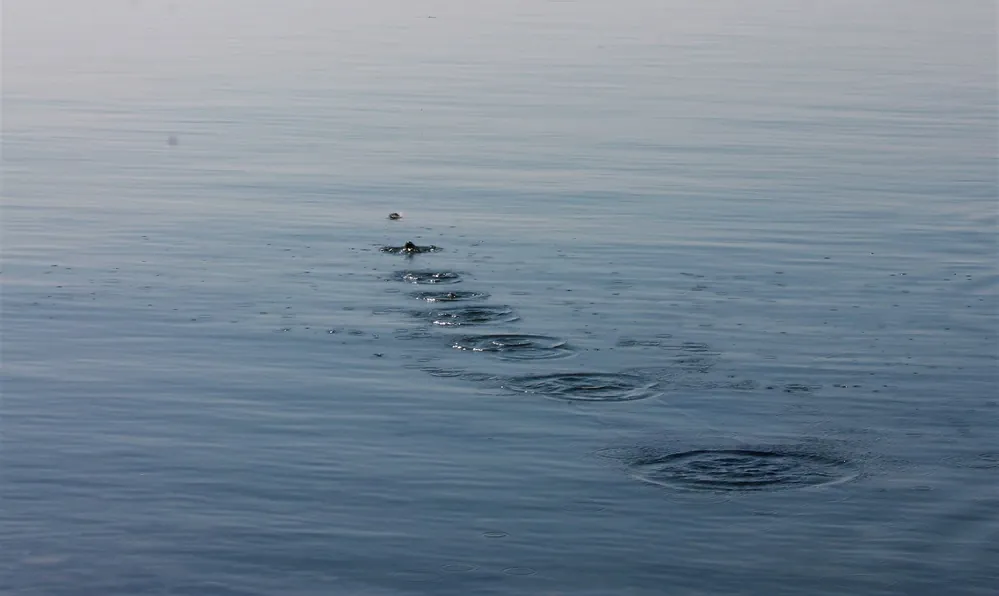
It was unsurprising that theoretically the faster the spinning stone, the more it will bounce. Maintaining the spin prevents the stone from tipping over into the water. He then took the current world record at that time and he predicted the stone would be travelling at 40 km/hr and spinning at 14 rotations per second.
The current world champion, Kurt Steiner, has relied on empiricism and, believe it or not, he has collected more than 10,000 “quality rocks” and has sorted each according to its type, to prepare for the best possible throw. He looks for stones “that weigh between 85 and 230 gm, are very smooth (they don’t have to be perfectly round), flat bottoms and are between 6-8 mms in thickness.” It sounds as if he does not have much of a life in Kane, which is a small township in northern Pennsylvania. But what wrist strength this guy must have as compensation.
Bocquet added that he was just re-discovering a piece of history. Barnes Wallis must have done the same sort of mathematics and experiments when designing the “bouncing bomb” for the Dambusters squadron during World War II.
Culinary Dystopia
In the wonderful quest for new experiences, I have three where this initial experience, if not completely horrendous, verged on gustatory nightmare.
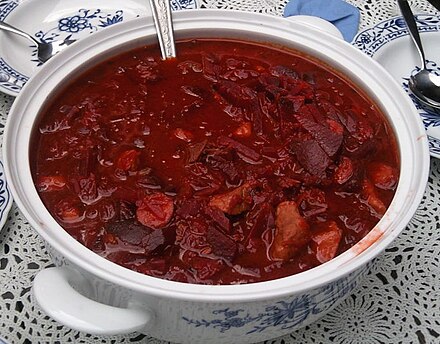 I was reminded of the first by this long article in The Guardian about borscht. I advisedly spell it the Yiddish way because it was presented to us one Friday night at Shabbat. As I understand it, heating the food for Shabbat is not done, so when we sat down we were presented with this blood red beetroot cold soup. For those of us not used to such soup, including myself, I felt as I sipped it, my stomach immediately rejecting it and that going down was met by that coming up. I was not alone. There is no etiquette for vomiting at the dinner table, especially when presented with a signature dish. There was a certain embarrassment, but the gefilte fish attracted more positive comments. I must say that I have eaten borscht since, but always warm – not that I have a phobia about cold soup. Iced gazpacho on a hot day is a magnificent culinary antidote on such a day.
I was reminded of the first by this long article in The Guardian about borscht. I advisedly spell it the Yiddish way because it was presented to us one Friday night at Shabbat. As I understand it, heating the food for Shabbat is not done, so when we sat down we were presented with this blood red beetroot cold soup. For those of us not used to such soup, including myself, I felt as I sipped it, my stomach immediately rejecting it and that going down was met by that coming up. I was not alone. There is no etiquette for vomiting at the dinner table, especially when presented with a signature dish. There was a certain embarrassment, but the gefilte fish attracted more positive comments. I must say that I have eaten borscht since, but always warm – not that I have a phobia about cold soup. Iced gazpacho on a hot day is a magnificent culinary antidote on such a day.
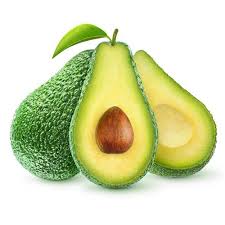 The second disastrous introduction was to the avocado. One night, we had been invited to a dinner party. It was sometime in the early 1960s. The hostess produced this unfamiliar green fruit, which vaguely resembled a pebbled-skin pear. However, nobody had told her that they had to be ripe to eat. Hence, we struggled with the yellowish flesh surrounding the central seed. Unripe avocado flesh, as we found out, was like concrete, and after hacking pieces of this flesh, it proved completely inedible. Nobody had thought to read anything about the fact that avocados had to ripen – and as we were already well lubricated, the avocados were swiftly destined for the rubbish bin.
The second disastrous introduction was to the avocado. One night, we had been invited to a dinner party. It was sometime in the early 1960s. The hostess produced this unfamiliar green fruit, which vaguely resembled a pebbled-skin pear. However, nobody had told her that they had to be ripe to eat. Hence, we struggled with the yellowish flesh surrounding the central seed. Unripe avocado flesh, as we found out, was like concrete, and after hacking pieces of this flesh, it proved completely inedible. Nobody had thought to read anything about the fact that avocados had to ripen – and as we were already well lubricated, the avocados were swiftly destined for the rubbish bin.
Several years passed before the avocado was revisited. The first avocados attacked were probably Haas, but the one I purchased from a barrow in central Sydney changed my whole notion of avocado. It was a smooth skinned variety, plump rather than lean like the Haas. Its flesh was ripe, closer to orange than yellow. It was the best avocado I have ever eaten, but I’ve never seen another one like it again, presumably because this variety ripens too quickly or lacks the commercial resilience of the Haas variety, which seems to dominate the avocados on sale.
With familiarity comes the elegance of shoving the unripe avocado into a brown paper bag with a banana, the ethylene emitted from it accelerating the avocado ripening.
 The third disastrous introduction was to the persimmon. There are two varieties of persimmon – those that are astringent when not perfectly ripe and those which are not. This time the particular hostess proudly presented us with persimmons as a treat at the end of the meal. Unfortunately, they were the astringent types, and I referred to my mouth after eating a sliver as being like having an Axminster carpet lining my mouth, so great was the astringency.
The third disastrous introduction was to the persimmon. There are two varieties of persimmon – those that are astringent when not perfectly ripe and those which are not. This time the particular hostess proudly presented us with persimmons as a treat at the end of the meal. Unfortunately, they were the astringent types, and I referred to my mouth after eating a sliver as being like having an Axminster carpet lining my mouth, so great was the astringency.
Nothing since has created this buccal environment to such an extent. Since then, most persimmons on sale have been of the non-astringent variety, until last week when the Chinese greengrocer chuckled his warning that my wife had purchased the “old ones”. We immediately knew what he meant, and let the persimmon ripen until it was so ripe as to be soggy. Persimmons in this state are very pleasant, but best eaten over the sink.
In the end, it demonstrates the adage, you live and learn – so long as the offering is not poisonous rather than just inedible. One wonders with so much cooking material published across all forms of media, that the ignorance we showed then would occur to-day.
Just One Invasion Day
It has become fashionable among some of our Aboriginal brothers and sisters to classify us whitefellas as invaders. But we are an essentially homogeneous “mob” of colonisers – the only invaders who stayed. We are British with a Celtic spine. Australia had just one single coloniser, despite being originally known as New Holland and the name of the Island to the South, Tasmania.
Explorers from other European countries came, saw the Australian coastline and did not remain. The colonisation of Australia was neither Africa nor Asia or for that matter the Americas. It was essentially monochromatic – British imperial red. We Australians of Anglo-Celtic descent did not have to either fight other colonial powers or buy part of the Continent from another European coloniser.
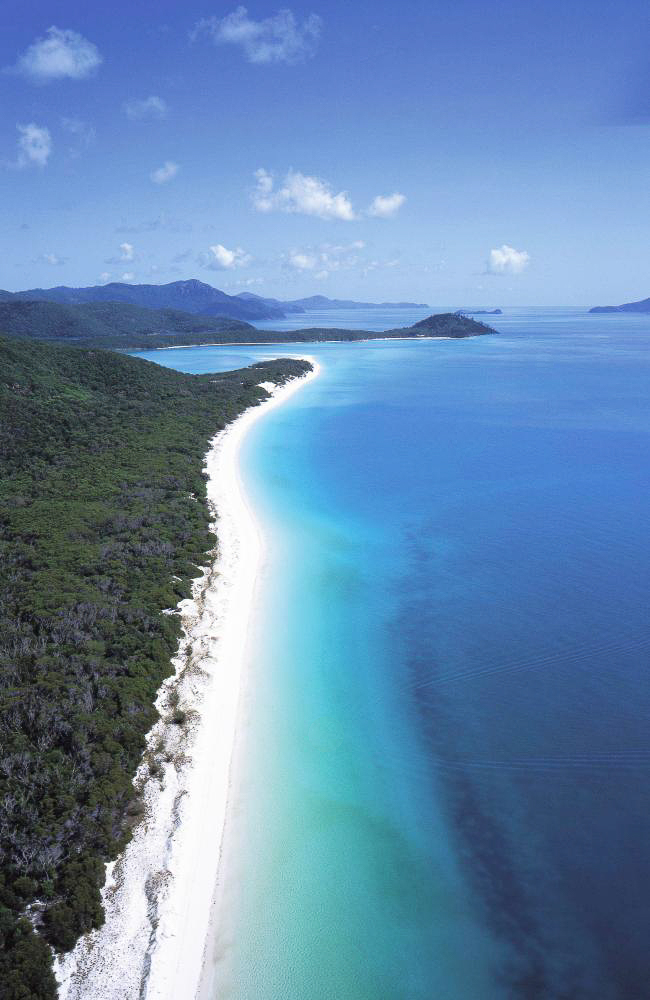
It is ironic that Australia, now a popular tourist destination with magnificent beaches, was rejected by these early European explorers who saw it as too hostile an environment to colonise.
I would have said that the Aboriginals just invaded some time before when land bridges made movement easier. It is interesting that the original mob came without animals, in particular they lacked horses – and also the wheel.
The dingo was brought by the Macassar traders about 4,000 years ago. The trade between these Sulawesans and the local Aboriginals in sea cucumber existed until the early years of 20th century. They came down to fish but not to stay, taking their catch back when the winds changed and blew them back home where they sold the dried sea cucumber product to the Chinese.
Yet the Torres Strait Islanders are a potpourri of Melanesians and Polynesians admixed with Aboriginal people. I have witnessed the discrimination of Horn Aboriginal islanders by their Torres Strait Islander neighbours even though they all have been recognised as part of the Australian indigenes. Yet the Torres Strait Islanders have never moved southwards to settle on Cape York Peninsula nor the islands in the Gulf.Luis Torres, himself was a Portuguese in command of a Spanish ship, sailed through the eponymous Strait in 1606, without stopping (that we know of), on his way to Espiritu Santo in what is now Vanuatu.
However, in all the Voice debate, it is to a heterogeneous world of multiple Aboriginal mobs who, in the long term, only needed to deal with one European power – us British with Celtic overlay, who have facilitated a debate about the Voice rather than a conglomerate of the Voix, Stem, Rолос or Voz. Imagine getting a world of multiple colonisers to agree on what it means – would the Aboriginals thus be so lucky as to have to deal with only one set of “invaders”.
Ourselves to Know
“Then I won’t pursue the subject, but you believe that a painter is restricted by three dimensions? Those of his canvas and the third one, imaginary, his fear of his mediocrity?”
“I didn’t say mediocrity! A man can be first-rate and still have that fear. Oh, indeed! The great ones have it earlier and later than the fourth-raters, they always have it. Their greatness is in going on and on until they know they’ve gone as far as they can, then they still go on doing their best work, sometimes for a year, sometimes for ten years. Then, if they’re lucky, they die. If they’re easily frightened, they kill themselves while they’re still able to do their best work, with some left undone.”
“Would you ever commit suicide?”
“How could I? I don’t care that much about anything. And I’ve protected myself by engaging in a large assortment of activities, so that if one thing ceases to interest me, I have others that will.”
“I don’t believe you. I think you care very deeply about some things.”
“Then that’s the most intelligent observation you’ve ever made about me,” said Chester Calthorp. “I care greatly about a great many things. Have you always known that?”
“I guess so.”
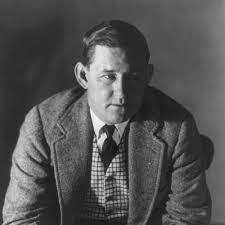
John O’Hara is now not the most fashionable of American novelists. He wrote “Ourselves to Know” which was first published in 1960, to much acclaim. The dust jacket echoed this regard when there was written about this book: “… at the height of his powers John O’Hara has produced a masterly study of a man and his destiny.”
This above exchange is between two young men when they were in Paris – Robert Millhouser (later convicted of uxoricide as the book tells us) and Chester Calthorp (who is revealed as homosexual), both affluent. What seems weird to me is how much I understand what this exchange is about while not knowing whether my interpretation has coincided with the author’s intent.
Most of us are pedestrian but we struggle under the delusion we can do or become better. Some do claw their way to the top of whatever pile they have seen from the valley of ambition and want to scale. Then, wherever one is on the slope, there is always the doubt, the failure, the suicide of compensation. To guard against that we should diversify our ambition in order to combat obsession with just one goal, but only if one has the capacity to care, which O’Hara writes lifts one to a higher plane. Metaphorically, look around and see if you are alone. If so, then you will never have the capacity to care.
This is my interpretation, and I wish I could express it as well as O’Hara. But at least I recognised something which is embedded deeply in my psyche. After all, the novel is long, and I am not the type of person who reads every word. But this passage has stuck in my mind.
Mouse Whisper
John O’Hara wrote the book for the musical Pal Joey, which was set to music by Richard Rogers and Lorenz Hart. The book came from a series of short stories in New Yorker about a con man and night club performer, Joey Evans.
The lead role in this 1940 musical first performed at the Ethel Barrymore Theatre in New York was Gene Kelly, then little known.
To say it received “mixed” reviews would be somewhat kind. But probably one of the most famous quotes came from Brooks Atkinson of The New York Times: “Although it is expertly done, can you draw sweet water from a foul well?”
